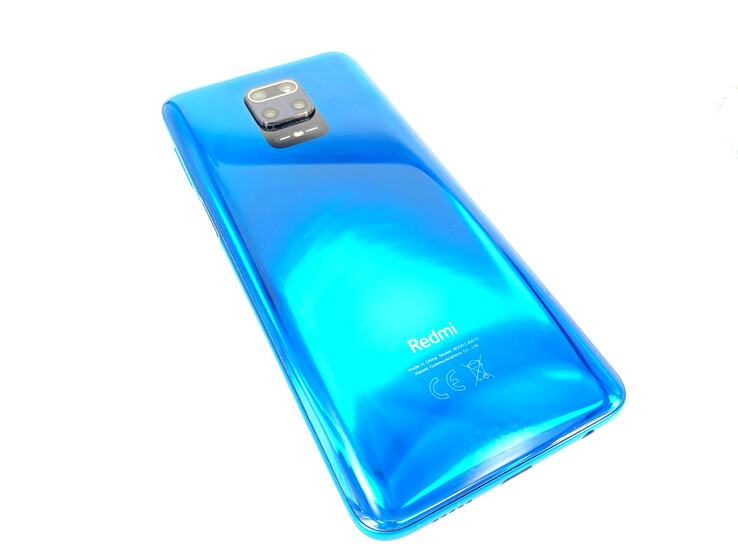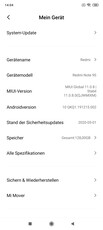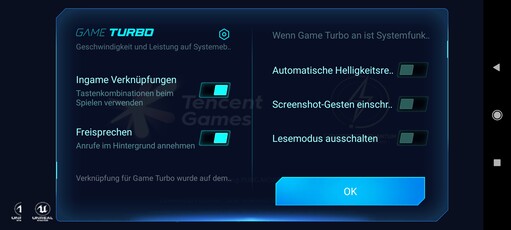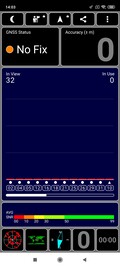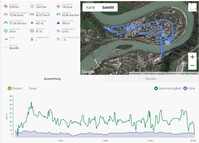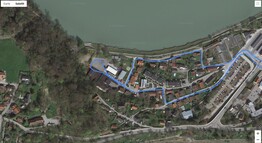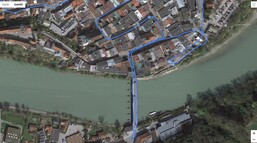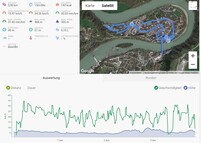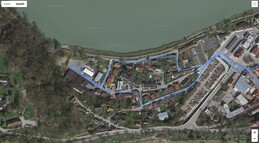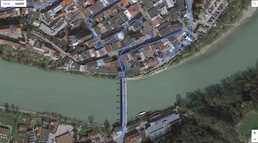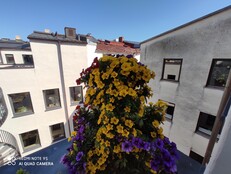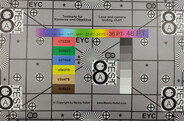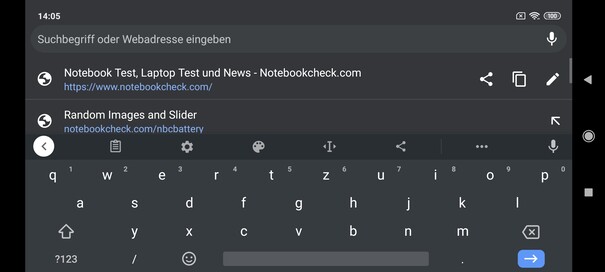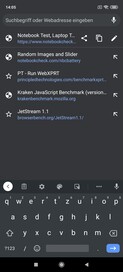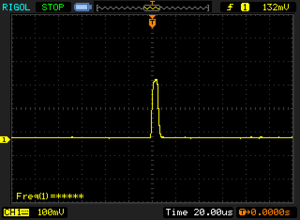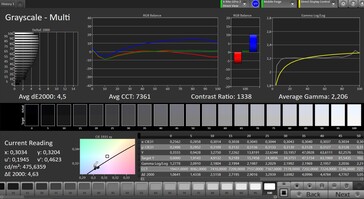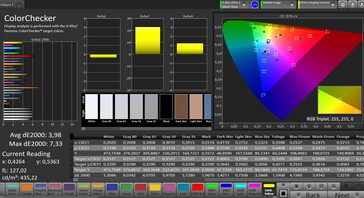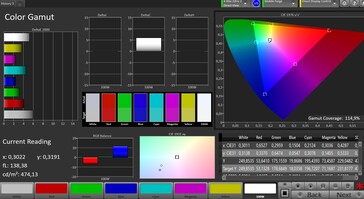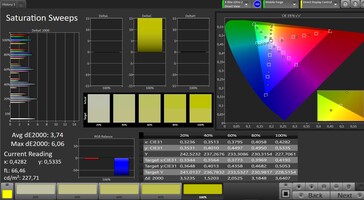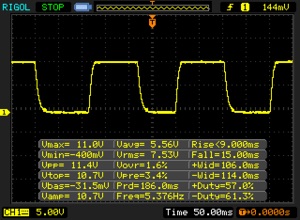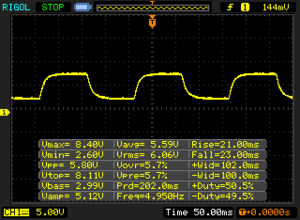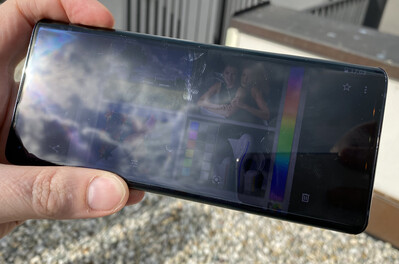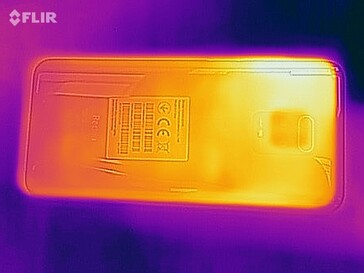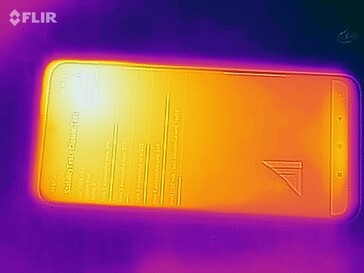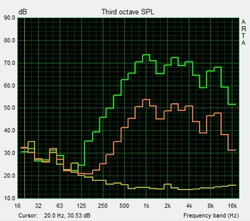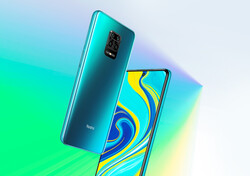Xiaomi Redmi Note 9S inceleme – Büyük ekran, düşük fiyat
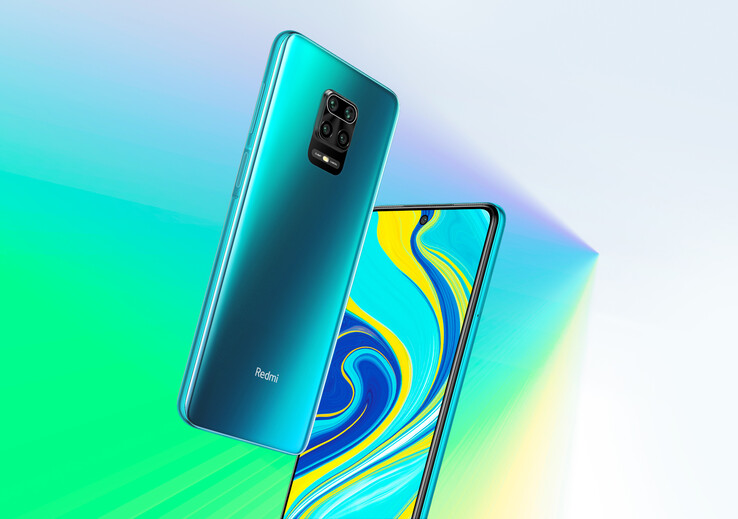
Xiaomi, benzer fiyatlı rakiplerini geride bırakan veya tekrar tekrar (ve tekrar tekrar) mükemmel bir fiyat-performans oranı sunmayı başaran akıllı telefonları piyasaya sürmekle ünlüdür. Redmi serisi akıllı telefonlar, şirketin ana serisinden çok daha fazlası olan Xiaomi'nin en rekabetçi fiyatlı serisidir. Redmi Note 9S, Huawei P40 Lite veya Motorola Moto G8 gibi 200-250 $ aralığında yerleşik uygun fiyatlı orta sınıf en iyi köpeklerle kafa kafaya gitmek üzere. 210 $ civarında büyük bir akıllı telefona sahip olacaksınız ekran, 128 GB depolama alanı ve 6 GB RAM. İlginç bir şekilde Xiaomi, web sitesinde 64 GB depolama ve 4 GB RAM ile aynı fiyatlı başka bir SKU listeliyor. Kim bilir, belki bazı müşteriler daha az depolama alanı talep eder.Önceki yıllardaki deneyimlerimize ve Redmi Note 9S'nin özelliklerine hızlı bir bakışla, bunun çok ilginç olacağını zaten söyleyebiliriz. Redmi Note 9S sadece çok zarif görünmekle kalmıyor, aynı zamanda ek çok yönlülük, hızlı depolama ve hızlı bir SoC için geniş açılı bir makro lens ve yüksek çözünürlüklü bir ana kamera ile birlikte geliyor. Kesin olan bir şey var: Bu gerçekten oldukça heyecan verici olacak.
Test Group
Derecelendirme | Tarih | Modeli | Ağırlık | Sürücü | Boyut | Çözünürlük | Fiyat |
|---|---|---|---|---|---|---|---|
| 80.7 % v7 (old) | 06/2020 | Xiaomi Redmi Note 9S SD 720G, Adreno 618 | 209 g | 128 GB UFS 2.0 Flash | 6.67" | 2400x1080 | |
| 76.6 % v7 (old) | 06/2020 | Motorola Moto G8 SD 665, Adreno 610 | 188 g | 64 GB eMMC Flash | 6.40" | 1560x720 | |
| 81.3 % v7 (old) | 05/2020 | Huawei P40 Lite Kirin 810, Mali-G52 MP6 | 183 g | 128 GB UFS 2.1 Flash | 6.40" | 2310x1080 | |
| 75.5 % v7 (old) | 12/2019 | Gigaset GS290 Helio P23 MT6763V, Mali-G71 MP2 | 190 g | 64 GB eMMC Flash | 6.30" | 2340x1080 | |
| 80.7 % v7 (old) | 10/2019 | Xiaomi Redmi Note 8 Pro Helio G90T, Mali-G76 MP4 | 200 g | 128 GB UFS 2.0 Flash | 6.53" | 2340x1080 |
Top 10
» Top 10 Multimedia Notebook listesi
» Top 10 oyun notebooku
» Top 10 bütçeye uygun Ofis/İş Notebook Listesi
» Top 10 Premium Ofis/İş notebookları
» Top 10 Çalışma istasyonu laptopları
» Top 10 Subnotebook listesi
» Top 10 Ultrabooklar
» En iyi 10 dönüştürülebilir modeli
» Seçimi en iyi 10 tablet
» Notebookcheck Top 10 Windows Tabletleri
» Top 10 Subnotebook listesi
» NotebookCheck tarafından incelenen en iyi Notebook ekranları
» Notebookcheck'in 500 Euro altındaki en iyi 10 Notebook listesi
» NotebookCheck tarafından seçilen 300 Euro altındaki en iyi 10 Notebook
» Notebookcheck'in 500 Euro altındaki en iyi 10 Notebook listesi
» Notebookcheck'in Top 10 akıllı telefon listesi
» Notebookcheck'in Top 10 hafif oyun notebookları
Kasa - Parlak Ağır Siklet
Her zaman olduğu gibi, dış ile başlıyoruz ve bu ne bir başlangıç! Parlak arka, hafif mat bir çerçeve ile koyu mavi kaplıdır. Önde, ekranın etrafında görünür ancak aşırı kalın olmayan çerçeveler buluyoruz. Diğer renk seçenekleri arasında krem beyazı ve koyu gri bulunur.Redmi Note 9S oldukça büyük ve çok ağır bir akıllı telefon. Aslında, 209 g'da test grubumuzdaki en ağır cihazlardan biridir. Tüm kenarlar ve köşeler yuvarlandığından kullanım çok rahat ve çeşitli malzemeler ve bileşenler arasında herhangi bir geçiş fark etmedik. Kasa çok sağlam hissediyor ve ön veya arka tarafına uygulanan basıncın ekran üzerinde hiçbir etkisi yok.
Bağlantı - Büyük Depolama, NFC yok
Bu fiyat aralığındaki cihazlar için 128 GB depolama alanı duyulmaz. UFS 2.1 hızı ise oldukça nadirdir. 6 GB RAM yeterli ve yeterlidir. USB-C bağlantı noktası yalnızca talihsiz bir USB 2.0 denetleyiciye bağlanır, ancak en az 3,5 mm kulaklık girişi de mevcuttur. Cihazın üstündeki kızılötesi bağlantı noktası, Not 9S'nin televizyonlar için uzaktan kumanda olarak kullanılmasını sağlayan hoş bir bonus. Özel microSD yuvası sayesinde her iki nano SIM yuvası da her zaman kullanılabilir durumda. Maalesef, cihazda NFC yoktur ve bu nedenle örneğin Google Pay gibi mobil ödeme sistemleri için kullanılamaz.
Yazılım - Güncel Android özellikli Xiaomi akıllı telefon
Cihaz, Android 10 ve Xiaomi'nin kendi MIUI Global v11'i ile önceden yüklenmiş olarak geliyor. Güvenlik yamaları yazma sırasında günceldi.Bazı gelişmiş sistem ayarları, telefon numaranıza bağlanması gereken bir Mi hesabı gerektirir. Ancak, çoğu durumda bir Xiaomi hesabı olmadan gayet iyi yapacaksınız. Cihaz, üçüncü taraf reklam uygulamaları ve istenirse tamamen kaldırılabilen ücretsiz oynanabilir oyunlarla önceden yüklenmiş olarak gelir.Telefonun L1 Widevine DRM sertifikalı olduğu göz önüne alındığında, yüksek içerik çözünürlüklerinde akış içeriğinin keyfini çıkarabilirsiniz.
İletişim ve GPS - Wi-Fi 5 dahil
LTE desteği oldukça kapsamlıdır ve yakındaki ülkelere seyahatler için yeterli olmalıdır. Bu, cihazın bir dünya telefonu olmadığını ve bu nedenle yurtdışındaki kapsamlı seyahatler için uygun olmayabileceğini söyledi. Ayrılmadan önce gereken özen gösterdiğinizden emin olun.Repep iyi oldu ve kısa bir test ve dışarıda başka bir bar sırasında kapalı mekanda en az% 50 hücresel alım yaptık. IPhone 11 Pro Max, aynı SIM kartla donatıldığında daha iyi bir alım aldı.Desteklenen en hızlı kablosuz ağ standardı Wi-Fi 5 ve performans, sınıfının diğer cihazlarından beklenen ve benzer bir seviyede idi. Ne yazık ki, Netgear Nighthawk AX12 referans yönlendiricimize bağlandığında transferlerimiz sırasında 100 Mb / s'ye kadar ağır dalgalanmalara tanık olduk.
| Networking | |
| iperf3 transmit AX12 | |
| Huawei P40 Lite | |
| Xiaomi Redmi Note 8 Pro | |
| Xiaomi Redmi Note 9S | |
| Gigaset GS290 | |
| Motorola Moto G8 | |
| iperf3 receive AX12 | |
| Xiaomi Redmi Note 8 Pro | |
| Huawei P40 Lite | |
| Xiaomi Redmi Note 9S | |
| Gigaset GS290 | |
| Motorola Moto G8 | |
GPS modem çeşitli uydu ağlarını desteklese de iç mekanlarda konum kilidi alamadı. Dış mekan GPS doğruluğu 4 m'de ölçüldü ve bu yüzden çok iyi. Her akıllı telefonu profesyonel bir Garmin Edge 520 satnav ile karşılaştırdığımız blok etrafındaki olağan bisiklet turumuzda, Xiaomi Redmi Note 9S genel olarak güvenilir bir satnav cihazı olduğu ortaya çıktı. Sadece dar eski şehir sokaklarında doğruluk fark edilir derecede azaldı ve kaydedilen parkur hem atladı hem de gerçek konumumuzdan saptı. Şehir dışında bir alanda açık gökyüzü altında konumlandırma çok doğruydu. Şehirlerde aynı doğruluk düzeyini bekliyorsanız, önce Redmi Note 9S'ye bir deneme çalışması yapmak isteyebilirsiniz, aksi takdirde doğruluğu günlük kullanım için yeterliydi.
Telefon ve Çağrı Kalitesi - Ortalama Ses Kalitesi
Xiaomi, kullanım kolaylığı ve net düzenlemesi nedeniyle iyi bir seçim olduğu ortaya çıkan Google'ın varsayılan telefon uygulamasını tercih etti. VoLTE veya VoWiFi gibi modern iletişim teknolojileri desteklenmez. Konuşmacı ortağımız yüksek sesle ve netti ama biraz uzaktı ve yüksek ses seviyelerinde küçük bir uğultunun yanı sıra açıkça duyulabilen arka plan gürültüsü eşlik etti. Aynı şey hoparlörden konuşurken de geçerliydi. Buna ek olarak, konuşma partnerinizin söylediklerinizin bir kelimesini anlayabilmesi için hoparlörden konuşurken sesinizi oldukça belirgin bir şekilde yükseltmeniz gerekir.
Kameralar - Yüksek Çözünürlüklü Çok Yönlülük
48 MP kameralar şu anda akıllı telefonlar dünyasının en sıcak noktası. Fikir, ya devasa sensörü tam doğal çözünürlüğünde kullanmak ya da dört pikseli, çok sayıda uygulama için yeterince büyük bir 12 MP görüntü ile sonuçlanan gelişmiş ışık duyarlılığı ile tek bir çok büyük pikselde birleştirmektir. Ayrıca, Redmi Note 9S'de bir makro ve geniş açılı bir lens de bulunuyor. İkincisi, ana lensle birlikte 0.1x adımlarla sorunsuz bir şekilde yakınlaştırılabilir ve uzaklaştırılabilir.Varsayılan ayarlarda ana kamera, teknik olarak düşük pozlama yapılmasa da karşılaştırma fotoğraflarımızdan biraz daha koyu görünen görüntüler üretti. Genel dinamik aralık daha düşüktür, bu da fotoğrafın çok karanlık ve çok parlak alanlarında ayrıntıların kaybolmasına neden olur. Buna ek olarak, ayrıntılar daha yüksek kaliteli akıllı telefon kameralarına göre daha fazla tüketildi. Bununla birlikte, ana kamera özellikle Redmi Note 9S'nin düşük fiyatı göz önüne alındığında iyi fotoğraflar çekiyor. Geniş açılı lens 8 MP sensörün önünde oturuyor ve yanlardaki kaçınılmaz geniş açılı bozulmalar yazılımda çok iyi bir şekilde ele alınıyor ve düzeltiliyor . Sonuç olarak, Xiaomi tarafından iddia edildiği gibi 119 derece yerine etkili görüş alanı sadece 108 dereceye düşürüldü. Bu özellik devre dışı bırakılabilir, bu da kenarlarda bozulmalarla daha geniş açılara neden olur. Makro lens son derece ayrıntılı yakın çekim fotoğraflar çekebilir. Ne yazık ki, sadece 5 MP çözünürlüğü çok düşük ve kamera böylece kamera çok yönlülüğünü daha da geliştirmek için bir hile eklendi.Kamera yazılımı, örneğin bir eğim kaydırma efekti (çekilen manzara fotoğraflarında bulanık kenarlar) gibi çeşitli efektler eklemeyi destekler model tren efektinin yukarıdan veya daha fazla arttırılması) veya bir tarayıcıyı değiştirmesi gereken bir belge modu. İkincisi siyahla oldukça iyi çalıştı
Görüntü Karşılaştırma
Bir sahne seçin ve ilk görüntüde gezinin. Tek bir tıklama dokunmatik ekranlardaki konumu değiştirir. Yakınlaştırılmış görüntüye tek tıklamayla orijinal yeni bir pencerede açılır. İlk resimde test cihazının ölçekli fotoğrafı gösterilmektedir.
Scene 1Scene 2Scene 3
Ayrıntılar neredeyse tamamen çok düşük ışıkta kayboldu, ancak mum ışığı zaten işe yarayacak. Bahsedilen detaylar soluk kalacak. Test grafiğimiz biraz soluk yakalandı ve kontrastı yoktu.
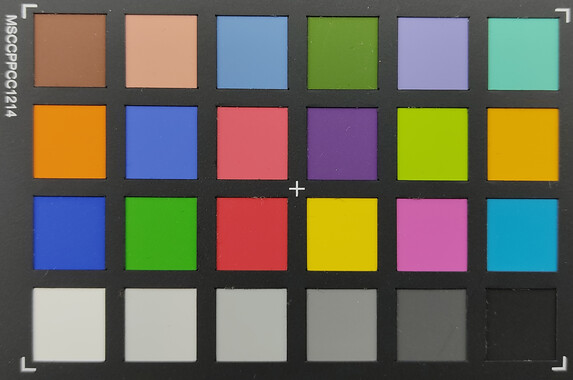
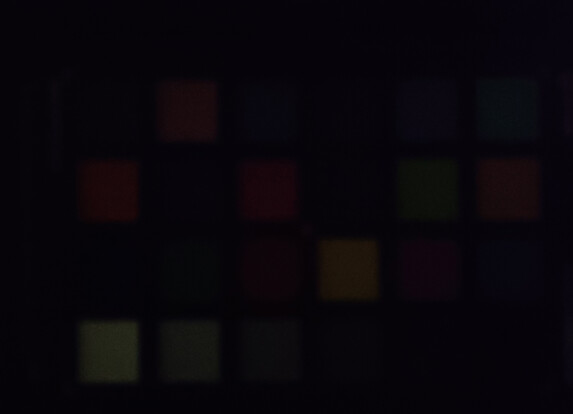
Aksesuarlar ve Garanti - Çanta Dahil
Şarj cihazının, USB kablosunun ve SIM aracının yanındaki kutuda bulunan silikon tampon hoş bir bonus. Kulaklık dahil değildir. Garanti bölgeye ve ülkeye göre değişir. Avrupalı müşteriler, Xiaomi'nin Avrupa şubesi sayesinde tam 24 ay garanti alıyor. OEM, istenirse isteğe bağlı garanti uzatmaları da sunar.
Giriş cihazları
Redmi Note 9S'nin geniş dokunmatik ekranı küçük eller için çok uygun değil. Genel olarak çok doğru ve pürüzsüz. Varsayılan olarak, kullanılabilirlik üzerinde hiçbir etkisi olmayan bir ekran koruyucusu ile birlikte gelir. Parmak izi okuyucusu, sağ taraftaki gömme güç düğmesinin içinde bulunur; bu, sağ elinizin başparmağının olacağı göz önüne alındığında iyi seçilmiş bir konum olduğu ortaya çıktı. telefonu sağ elinizde tuttuğunuzda bu alanda doğal olarak dinlenin ve sol elinizde tutarken sol işaret parmağınıza yeterince yakındır. Sensör çok hızlı ve güvenilir bir şekilde çalıştı.Ayrıca yüzümüzün bir fotoğrafını referans olarak aldığı için özellikle güvenli görünmese de bir yüz algılama özelliği de mevcuttur. Xiaomi, bu yöntemin desteklenen diğer kilit açma yöntemleri kadar güvenli olmadığını iddia ediyor. Testimizde genel olarak güvenilir bir şekilde çalıştı ve başka bir akıllı telefonda çekilen bir selfie ile telefonun kilidini açmayı başaramadık.
Ekran - Yüksek Kontrast Güzel Olurdu
IPS ekran, bu sınıf için nadir olmayan 2400x1080 piksel doğal çözünürlükte çalışır. Otomatik parlaklık kontrolünü etkinleştirir ve parlak bir ışığı doğrudan ortam ışığı sensörüne parlatırsanız çok parlak olabilir. Parlaklık dağılımı tekdüze ve genel olarak iyi idi. Kapak tarafında, ekranın 0.56 nits siyah seviyesi çok yüksekti, bu da ortalama bir kontrast oranı ile sonuçlandı. Sonuç olarak, renkler özellikle belirgin değildir ve koyu alanlar siyahtan daha grimsi.
| |||||||||||||||||||||||||
Aydınlatma: 94 %
Batarya modunda parlaklık: 622 cd/m²
Kontrast: 1111:1 (Siyah: 0.56 cd/m²)
ΔE ColorChecker Calman: 3.98 | ∀{0.5-29.43 Ø4.78}
ΔE Greyscale Calman: 4.5 | ∀{0.09-98 Ø5}
114.9% sRGB (Argyll 1.6.3 3D)
Gamma: 2.206
CCT: 7361 K
| Xiaomi Redmi Note 9S IPS, 2400x1080, 6.7" | Motorola Moto G8 IPS, 1560x720, 6.4" | Huawei P40 Lite IPS, 2310x1080, 6.4" | Gigaset GS290 IPS, 2340x1080, 6.3" | Xiaomi Redmi Note 8 Pro IPS, 2340x1080, 6.5" | |
|---|---|---|---|---|---|
| Screen | 15% | 0% | 11% | -1% | |
| Brightness middle (cd/m²) | 622 | 504 -19% | 478 -23% | 465 -25% | 669 8% |
| Brightness (cd/m²) | 612 | 452 -26% | 448 -27% | 460 -25% | 630 3% |
| Brightness Distribution (%) | 94 | 83 -12% | 87 -7% | 88 -6% | 87 -7% |
| Black Level * (cd/m²) | 0.56 | 0.28 50% | 0.49 12% | 0.2 64% | 0.42 25% |
| Contrast (:1) | 1111 | 1800 62% | 976 -12% | 2325 109% | 1593 43% |
| Colorchecker dE 2000 * | 3.98 | 3.84 4% | 3 25% | 5.3 -33% | 4.8 -21% |
| Colorchecker dE 2000 max. * | 7.33 | 6.1 17% | 5.6 24% | 7.3 -0% | 9 -23% |
| Greyscale dE 2000 * | 4.5 | 2.7 40% | 4.1 9% | 4.2 7% | 6.2 -38% |
| Gamma | 2.206 100% | 2.235 98% | 2.26 97% | 2.09 105% | 2.24 98% |
| CCT | 7361 88% | 7125 91% | 7282 89% | 6558 99% | 7846 83% |
| Color Space (Percent of sRGB) (%) | 114.9 |
* ... daha küçük daha iyidir
Ekran Titremesi / PWM (Darbe Genişliği Modülasyonu)
| Ekran titriyor / PWM algılanmadı | |||
Karşılaştırıldığında: Test edilen tüm cihazların %53 %'si ekranı karartmak için PWM kullanmıyor. PWM tespit edilirse, ortalama 8111 (minimum: 5 - maksimum: 343500) Hz ölçüldü. | |||
PWM titrendiğine dair bir kanıt bulamadık. Tepki süreleri rekabetçi oyuncuların taleplerini karşılamak için çok yüksekti. CalMAN yazılımı ile birlikte bir spektrofotometre ile test edildiğinde, özellikle kırmızı ve turuncu tonlarda bazı renk sapmaları fark ettik. Griler oldukça doğruydu ve çıplak gözlerimizle herhangi bir sapma tespit edemedik. Redmi Note 9S'de mavi bir renk tonu yok.
Yanıt Sürelerini Görüntüle
| ↔ Tepki Süresi Siyahtan Beyaza | ||
|---|---|---|
| 24 ms ... yükseliş ↗ ve sonbahar↘ birleşimi | ↗ 9 ms yükseliş | |
| ↘ 15 ms sonbahar | ||
| Ekran, testlerimizde iyi yanıt oranları gösteriyor ancak rekabetçi oyuncular için çok yavaş olabilir. Karşılaştırıldığında, test edilen tüm cihazlar 0.1 (minimum) ile 240 (maksimum) ms arasında değişir. » Tüm cihazların 53 %'si daha iyi. Bu, ölçülen yanıt süresinin test edilen tüm cihazların ortalamasından (20.2 ms) daha kötü olduğu anlamına gelir. | ||
| ↔ Tepki Süresi %50 Griden %80 Griye | ||
| 44 ms ... yükseliş ↗ ve sonbahar↘ birleşimi | ↗ 21 ms yükseliş | |
| ↘ 23 ms sonbahar | ||
| Ekran, testlerimizde yavaş yanıt oranları gösteriyor ve oyuncular için yetersiz olacaktır. Karşılaştırıldığında, test edilen tüm cihazlar 0.165 (minimum) ile 636 (maksimum) ms arasında değişir. » Tüm cihazların 72 %'si daha iyi. Bu, ölçülen yanıt süresinin test edilen tüm cihazların ortalamasından (31.6 ms) daha kötü olduğu anlamına gelir. | ||
Görüş açıları oldukça geniştir ve görüntü çok dar açılardan bile bozulmadan kalmıştır.Açık kullanılabilirlik iyi idi ve cihaz parlak günlerde bile kullanılabilir kaldı. Ne yazık ki, yansıtıcı ekranı gözlerimiz için biraz yorucu ve doğrudan güneş ışığında kullanmak için can sıkıcı hale getirdi.
Performans - Bol miktarda 720m ile Snapdragon 720G
Qualcomm'un Snapdragon 720G, model adının sonunda G son ekinin önerdiği gibi, özellikle oyuncuları hedefleyen bir SoC'dir. Genel olarak, Redmi Note 9S için yüksek bir performans sunuyor ve hatta benzer fiyatlı rakiplerinden daha iyi performans göstermeyi başardı. Bu, Huawei P40 Lite'ın günlük kullanımda farkedilmek için yeterli olmasa da biraz daha fazla performans sunduğunu söyledi.Grafik performansı, ekranın doğal çözünürlüğünde zorlu oyunları sorunsuz bir şekilde çalıştıracak kadar yeterli değildi. Beklentilerinizi ve dolayısıyla ayrıntıları düşürmek, sorunsuz ve eğlenceli bir oyun deneyimi ile sonuçlanmalıdır.
| PCMark for Android | |
| Work performance score (değere göre sırala) | |
| Xiaomi Redmi Note 9S | |
| Motorola Moto G8 | |
| Huawei P40 Lite | |
| Xiaomi Redmi Note 8 Pro | |
| Ortalama Qualcomm Snapdragon 720G (9027 - 13821, n=7) | |
| Work 2.0 performance score (değere göre sırala) | |
| Xiaomi Redmi Note 9S | |
| Motorola Moto G8 | |
| Huawei P40 Lite | |
| Gigaset GS290 | |
| Xiaomi Redmi Note 8 Pro | |
| Ortalama Qualcomm Snapdragon 720G (7673 - 10181, n=7) | |
| AnTuTu v8 - Total Score (değere göre sırala) | |
| Xiaomi Redmi Note 9S | |
| Motorola Moto G8 | |
| Huawei P40 Lite | |
| Gigaset GS290 | |
| Xiaomi Redmi Note 8 Pro | |
| Ortalama Qualcomm Snapdragon 720G (253274 - 288306, n=5) | |
| Basemark GPU 1.1 | |
| 1920x1080 Vulkan Medium Offscreen (değere göre sırala) | |
| Xiaomi Redmi Note 8 Pro | |
| Vulkan Medium Native (değere göre sırala) | |
| Xiaomi Redmi Note 8 Pro | |
| 1920x1080 OpenGL Medium Offscreen (değere göre sırala) | |
| Xiaomi Redmi Note 8 Pro | |
| Xiaomi Redmi Note 8 Pro | |
| VRMark - Amber Room (değere göre sırala) | |
| Xiaomi Redmi Note 9S | |
| Xiaomi Redmi Note 8 Pro | |
| Ortalama Qualcomm Snapdragon 720G (n=1) | |
Web'e göz atma performansı, özellikle cihazın düşük fiyatı dikkate alındığında oldukça yüksekti. Web sitelerinin hızlı yüklenmesi ve resimlerin yüklenmesi nadiren daha uzun sürdü. Karmaşık HTML5 içeriği çoğu zaman sorunsuz bir şekilde oluşturuldu.
| Jetstream 2 - 2.0 Total Score | |
| Sınıf ortalaması Smartphone (23.8 - 387, n=154, son 2 yıl) | |
| Huawei P40 Lite (Huawei Browser 10.1.0.300) | |
| Xiaomi Redmi Note 9S (Chrome 81) | |
| Ortalama Qualcomm Snapdragon 720G (37.8 - 54.4, n=4) | |
| Xiaomi Redmi Note 8 Pro (Chrome 78) | |
| Motorola Moto G8 (Chrome 81) | |
| JetStream 1.1 - Total Score | |
| Huawei P40 Lite (Huawei Browser 10.1.0.300) | |
| Xiaomi Redmi Note 9S (Chrome 81) | |
| Ortalama Qualcomm Snapdragon 720G (59.7 - 94.7, n=5) | |
| Xiaomi Redmi Note 8 Pro (Chrome 78) | |
| Motorola Moto G8 (Chrome 81) | |
| Speedometer 2.0 - Result 2.0 | |
| Sınıf ortalaması Smartphone (15.2 - 643, n=128, son 2 yıl) | |
| Huawei P40 Lite (Huawei Browser 10.1.0.300) | |
| Xiaomi Redmi Note 9S (Chome 81) | |
| Xiaomi Redmi Note 8 Pro (Chrome 78) | |
| Ortalama Qualcomm Snapdragon 720G (26.8 - 45.2, n=4) | |
| Motorola Moto G8 (Chome 81) | |
| WebXPRT 3 - Overall | |
| Sınıf ortalaması Smartphone (38 - 380, n=35, son 2 yıl) | |
| Huawei P40 Lite (Huawei Browser 10.1.0.300) | |
| Xiaomi Redmi Note 9S (Chrome 81) | |
| Ortalama Qualcomm Snapdragon 720G (53 - 78, n=5) | |
| Xiaomi Redmi Note 8 Pro (Chrome 78) | |
| Motorola Moto G8 (Chrome 81) | |
| Octane V2 - Total Score | |
| Sınıf ortalaması Smartphone (2228 - 121337, n=201, son 2 yıl) | |
| Huawei P40 Lite (Huawei Browser 10.1.0.300) | |
| Xiaomi Redmi Note 9S (Chrome 81) | |
| Ortalama Qualcomm Snapdragon 720G (11846 - 17734, n=5) | |
| Xiaomi Redmi Note 8 Pro (Chrome 78) | |
| Motorola Moto G8 (Chrome 81) | |
| Mozilla Kraken 1.1 - Total | |
| Motorola Moto G8 (Chrome 81) | |
| Xiaomi Redmi Note 8 Pro (Chrome 78) | |
| Ortalama Qualcomm Snapdragon 720G (2532 - 3577, n=5) | |
| Xiaomi Redmi Note 9S (Chrome 81) | |
| Huawei P40 Lite (Huawei Browser 10.1.0.300) | |
| Sınıf ortalaması Smartphone (257 - 28190, n=156, son 2 yıl) | |
* ... daha küçük daha iyidir
MicroSD referans kartımızla donatıldığında, özel kart okuyucu çok iyi çalıştı. Ne yazık ki, okuma ve yazma performansı sadece ortalama olarak en iyiydi. Entegre UFS 2.1 depolama belleği bu fiyat sınıfı için çok hızlı performans gösterdi, ancak yine de Huawei P40 Lite tarafından daha iyi performans gösterdi.
| Xiaomi Redmi Note 9S | Motorola Moto G8 | Huawei P40 Lite | Gigaset GS290 | Xiaomi Redmi Note 8 Pro | Ortalama 128 GB UFS 2.0 Flash | Sınıf ortalaması Smartphone | |
|---|---|---|---|---|---|---|---|
| AndroBench 3-5 | -17% | 28% | -26% | 10% | -5% | 348% | |
| Sequential Read 256KB (MB/s) | 496.6 | 301 -39% | 913 84% | 274.2 -45% | 535 8% | 530 ? 7% | 2223 ? 348% |
| Sequential Write 256KB (MB/s) | 214.8 | 239 11% | 181.7 -15% | 196.8 -8% | 193.5 -10% | 212 ? -1% | 1838 ? 756% |
| Random Read 4KB (MB/s) | 137 | 57.3 -58% | 157.3 15% | 54.7 -60% | 156.2 14% | 130.6 ? -5% | 295 ? 115% |
| Random Write 4KB (MB/s) | 123.6 | 128.1 4% | 175.4 42% | 19.77 -84% | 180.4 46% | 101.2 ? -18% | 335 ? 171% |
| Sequential Read 256KB SDCard (MB/s) | 74.5 ? | 68.7 ? -8% | 82.6 ? 11% | 81.1 ? 9% | 71.6 ? -4% | 68.3 ? -8% | |
| Sequential Write 256KB SDCard (MB/s) | 54.9 ? | 48.7 ? -11% | 70.6 ? 29% | 73.9 ? 35% | 57.3 ? 4% | 53.2 ? -3% |
Gaming Performance – Gaming with 30 FPS
Using GameBench we attempt to determine how well the Redmi Note 9S performed in various games. Demanding games, such as PUBG Mobile or Asphalt 9, ran without any issues on our test device albeit only at 30 FPS. We noticed occasional minor frame drops but nothing to worry about. Overall, gaming on this device should not be a problem.
Both touchscreen and gyroscope worked very well and reliably.
Emissions – Redmi Phone without Throttling
Temperature
Temperatures remained slightly below the 40 °C threshold, resulting in a noticeably yet never uncomfortably warm case. Temperatures remained at elevated levels even when idle, and the Redmi phone never felt really cool to the touch.
We use GFXBench’s battery test to run the same benchmark 30x in a row and record the frames. If the results do not change it is safe to assume that the device in question is not thermal throttling under load. In the case of the Redmi Note 9S we are happy to report that we only noticed minor fluctuations in the recorded results, and overall performance was thus fairly consistent.
(+) Üst taraftaki maksimum sıcaklık, 35.2 °C / 95 F ortalamasına kıyasla 39.9 °C / 104 F'dir. , Smartphone sınıfı için 21.9 ile 247 °C arasında değişir.
(+) Alt kısım, 34 °C / 93 F ortalamasına kıyasla maksimum 39.9 °C / 104 F'ye kadar ısınır
(±) Boşta kullanımda, üst tarafın ortalama sıcaklığı 33.4 °C / 92 F olup, cihazın 32.9 °C / 91 F.
Speakers
A single mono speaker is located at the bottom of the device. Its soundscape is not particularly powerful but is fairly balanced overall. Highs never get too uncomfortable, and the speaker is thus usable for occasional music playback as long as you keep your audio quality expectations in check.
External audio devices can be connected to either the 3.5-mm headphone jack or wirelessly via Bluetooth. Both worked very well, and the resulting audio quality was very clear.
Xiaomi Redmi Note 9S ses analizi
(±) | hoparlör ses yüksekliği ortalama ama iyi (81 dB)
Bas 100 - 315Hz
(-) | neredeyse hiç bas yok - ortalama olarak medyandan 64.7% daha düşük
(+) | bas doğrusaldır (0% delta ile önceki frekans)
Ortalar 400 - 2000 Hz
(-) | neredeyse hiç orta seviye yok - ortalama olarak medyandan 64.7% daha düşük
(+) | orta frekanslar doğrusaldır (0% deltadan önceki frekansa)
Yüksekler 2 - 16 kHz
(-) | neredeyse hiç yüksek yok - ortalama olarak medyandan 64.7% daha düşük
(+) | yüksekler doğrusaldır (0% deltadan önceki frekansa)
Toplam 100 - 16.000 Hz
(-) | genel ses doğrusal değildir (119.7% ortancaya göre fark)
Aynı sınıfla karşılaştırıldığında
» Bu sınıftaki tüm test edilen cihazların %88%'si daha iyi, 9% benzer, 3% daha kötüydü
» En iyisinin deltası 11% idi, ortalama 35% idi, en kötüsü 134% idi
Test edilen tüm cihazlarla karşılaştırıldığında
» Test edilen tüm cihazların %96'si daha iyi, 3 benzer, % 1 daha kötüydü
» En iyisinin deltası 4% idi, ortalama 24% idi, en kötüsü 134% idi
Motorola Moto G8 ses analizi
(±) | hoparlör ses yüksekliği ortalama ama iyi (80.1 dB)
Bas 100 - 315Hz
(-) | neredeyse hiç bas yok - ortalama olarak medyandan 62.9% daha düşük
(+) | bas doğrusaldır (0% delta ile önceki frekans)
Ortalar 400 - 2000 Hz
(-) | neredeyse hiç orta seviye yok - ortalama olarak medyandan 62.9% daha düşük
(+) | orta frekanslar doğrusaldır (0% deltadan önceki frekansa)
Yüksekler 2 - 16 kHz
(-) | neredeyse hiç yüksek yok - ortalama olarak medyandan 62.9% daha düşük
(+) | yüksekler doğrusaldır (0% deltadan önceki frekansa)
Toplam 100 - 16.000 Hz
(-) | genel ses doğrusal değildir (120.9% ortancaya göre fark)
Aynı sınıfla karşılaştırıldığında
» Bu sınıftaki tüm test edilen cihazların %89%'si daha iyi, 8% benzer, 2% daha kötüydü
» En iyisinin deltası 11% idi, ortalama 35% idi, en kötüsü 134% idi
Test edilen tüm cihazlarla karşılaştırıldığında
» Test edilen tüm cihazların %97'si daha iyi, 2 benzer, % 1 daha kötüydü
» En iyisinin deltası 4% idi, ortalama 24% idi, en kötüsü 134% idi
Battery Life – Great stamina thanks to a large battery
Power Consumption
Given its large display and its powerful SoC it is no surprise that the Redmi Note 9S’s overall power consumption was comparatively high across the board. The Huawei P40 Lite turned out to be significantly more energy efficient. Under load, we recorded a maximum power consumption of up to 7.5 W.
| Kapalı / Bekleme modu | |
| Boşta | |
| Çalışırken |
|
Key:
min: | |
| Xiaomi Redmi Note 9S 5020 mAh | Motorola Moto G8 4000 mAh | Huawei P40 Lite 4200 mAh | Gigaset GS290 4700 mAh | Xiaomi Redmi Note 8 Pro 4500 mAh | Ortalama Qualcomm Snapdragon 720G | Sınıf ortalaması Smartphone | |
|---|---|---|---|---|---|---|---|
| Power Consumption | 7% | 24% | 19% | 10% | 20% | 5% | |
| Idle Minimum * (Watt) | 1.5 | 1.3 13% | 0.79 47% | 0.88 41% | 0.79 47% | 0.982 ? 35% | 0.848 ? 43% |
| Idle Average * (Watt) | 2.1 | 2 5% | 2.14 -2% | 2.05 2% | 2.32 -10% | 1.94 ? 8% | 1.434 ? 32% |
| Idle Maximum * (Watt) | 2.5 | 2.8 -12% | 2.23 11% | 2.1 16% | 2.38 5% | 2.06 ? 18% | 1.618 ? 35% |
| Load Average * (Watt) | 5.2 | 3.9 25% | 3.6 31% | 4.73 9% | 4.72 9% | 4.02 ? 23% | 7.01 ? -35% |
| Load Maximum * (Watt) | 7.5 | 7.2 4% | 5.17 31% | 5.61 25% | 7.68 -2% | 6.16 ? 18% | 11.3 ? -51% |
* ... daha küçük daha iyidir
Battery Life
The Redmi Note 9S is equipped with an unusually large 5,020 mAh battery, thanks to which it managed to run for an extended period of time and much longer than other competing devices. It lasted almost 20 hours in our Wi-Fi test and managed 4:39 hours of continuous gameplay or running demanding apps.
Charging the device with the included fast charger from near empty to full takes around 2 hours. However, topping up the device for just a few minutes will result in sufficient charge to last for a few hours of moderate use.
| Xiaomi Redmi Note 9S 5020 mAh | Motorola Moto G8 4000 mAh | Huawei P40 Lite 4200 mAh | Gigaset GS290 4700 mAh | Xiaomi Redmi Note 8 Pro 4500 mAh | |
|---|---|---|---|---|---|
| Pil Çalışma Süresi | -13% | -12% | -21% | -23% | |
| Reader / Idle (h) | 37.7 | 32.6 -14% | 35.9 -5% | 31.6 -16% | |
| H.264 (h) | 21.2 | 17.5 -17% | 19.6 -8% | 16.4 -23% | |
| WiFi v1.3 (h) | 19.8 | 16.5 -17% | 16.8 -15% | 15.6 -21% | 14.4 -27% |
| Load (h) | 4.7 | 4.6 -2% | 3.8 -19% | 3.5 -26% |
Artılar
Eksiler
Verdict – A Lot to Offer
Xiaomi’s Redmi Note 9S is living proof that $200 will get a you a great smartphone in 2020, both in terms of size as well as in regard to equipment and connectivity. Granted, you should not expect LTE performance levels akin to high-end smartphones, Wi-Fi 6 or NFC.
What the Redmi Note 9S has to offer in return is a flexible and versatile camera array with multiple well-usable lenses. Again, do not expect the same level of photo quality as in much more expensive high-end smartphones but lowering your expectations ever so slightly will be more than enough to accept the camera system for what it is.
You will also get a ginormous battery, one that is at least partly responsible for the Redmi’s high weight, with almost 20 hours of runtime in our Wi-Fi test.
The Xiaomi Redmi Note 9S offers a decent camera and long battery life at a low price.
The bright display could have benefited from a higher contrast ratio. Location services were accurate enough for everyday use. Considering its price class, the Note 9S was fairly powerful overall. It does not thermal throttle under load and offered an up-to-date Android system at the time of writing.
Overall, the Redmi Note 9S deserves our full endorsement as it comes with great features at a low price.
Xiaomi Redmi Note 9S
- 05/19/2020 v7 (old)
Florian Schmitt




